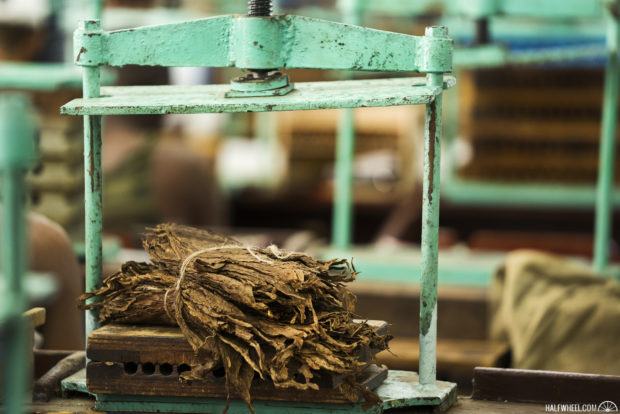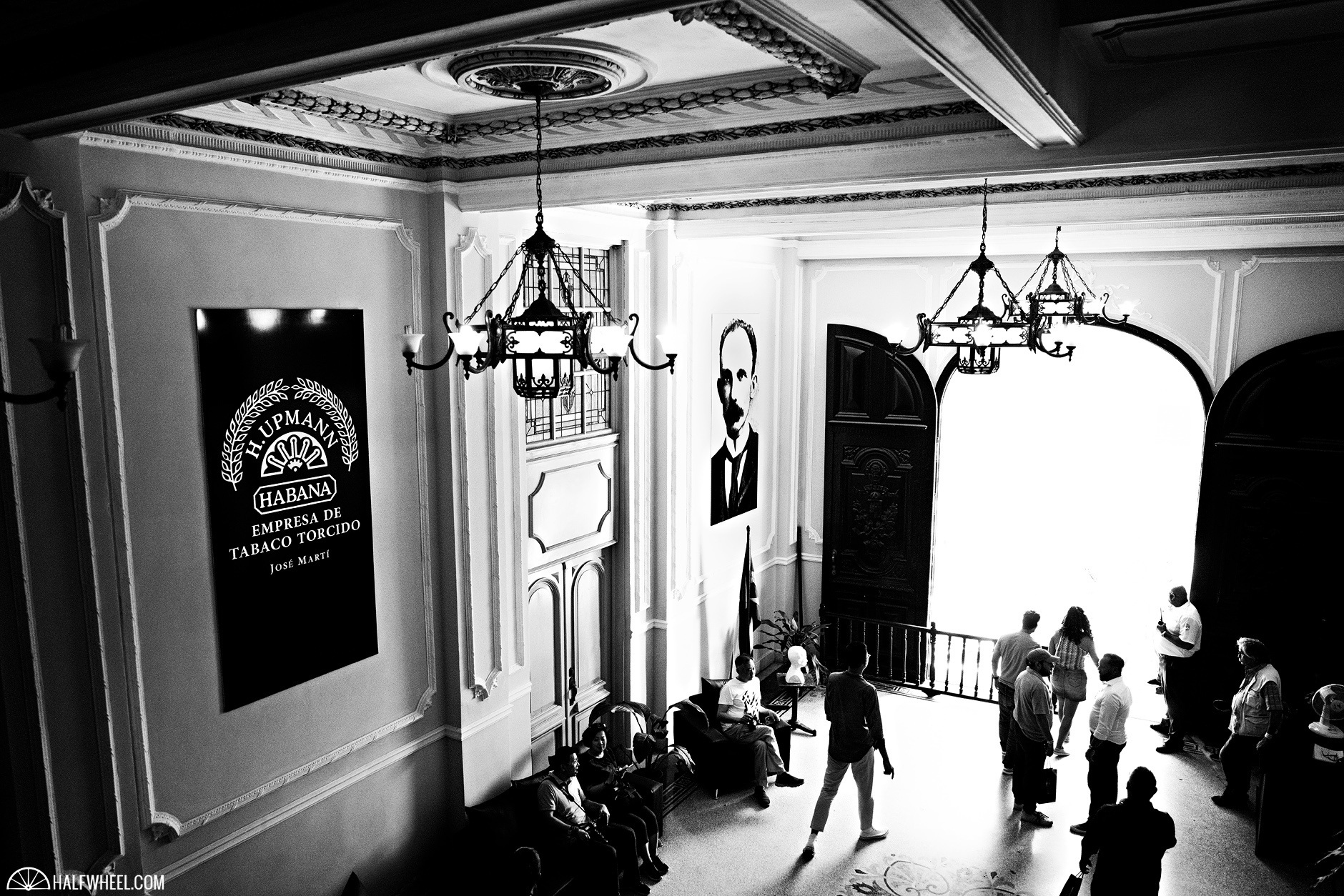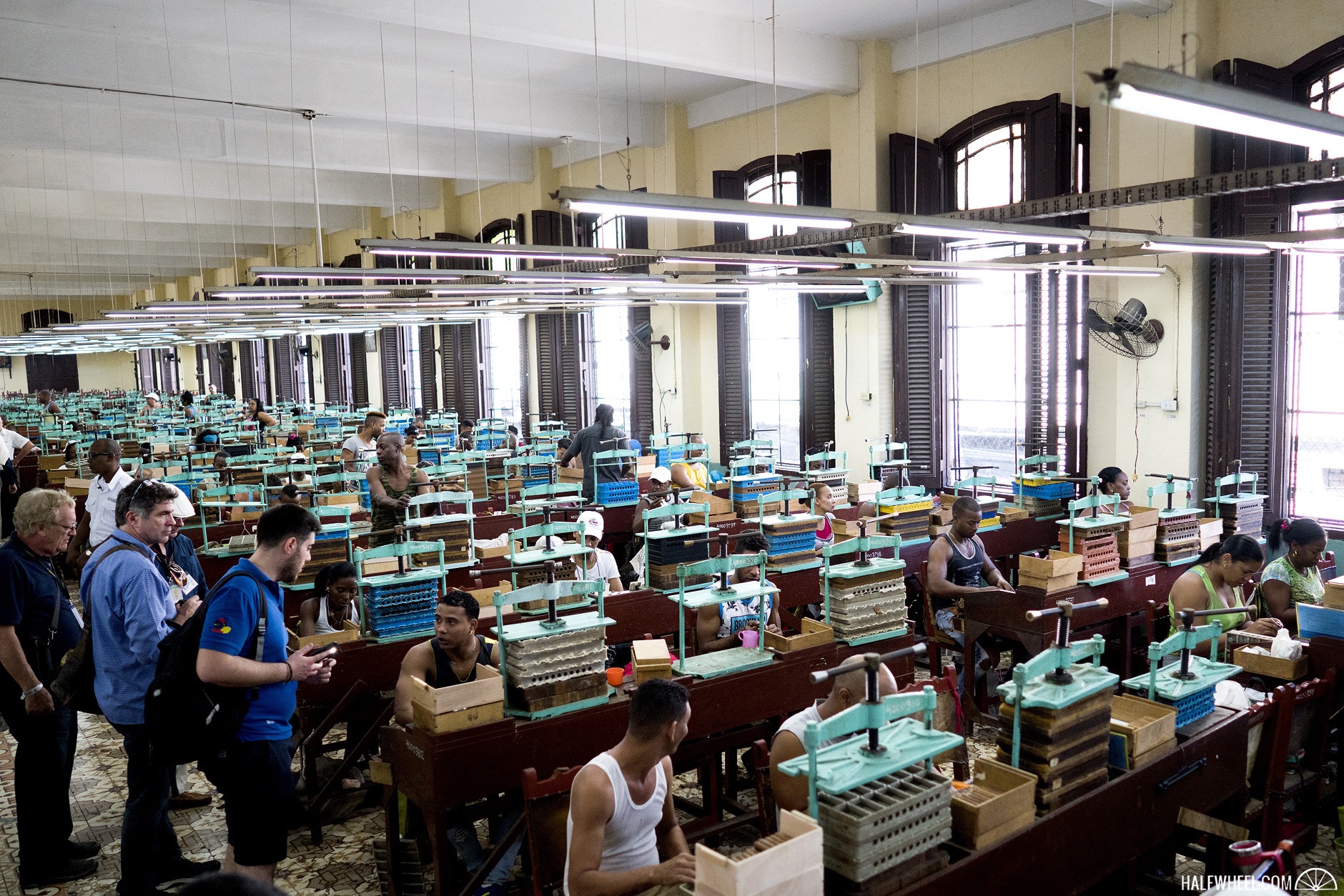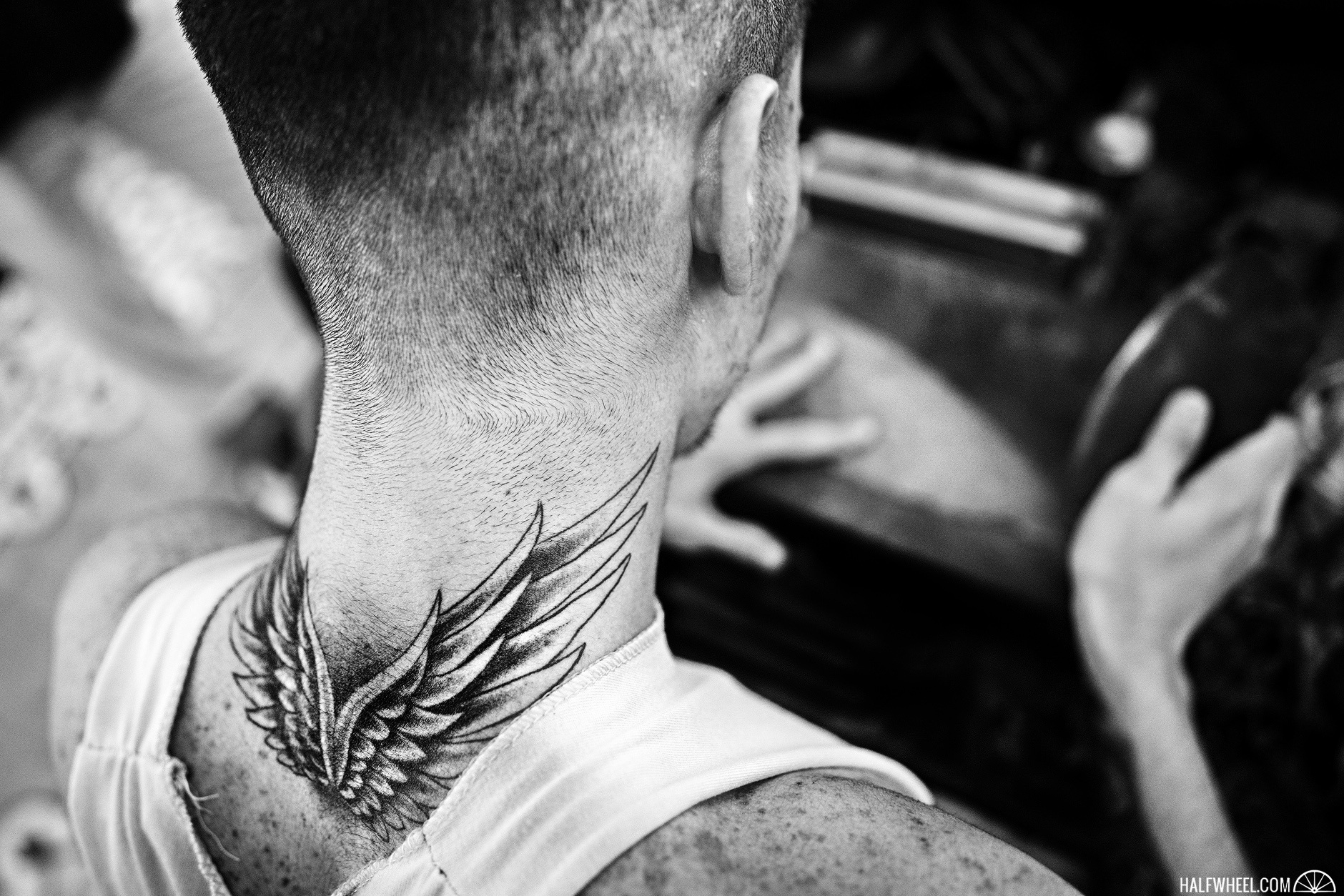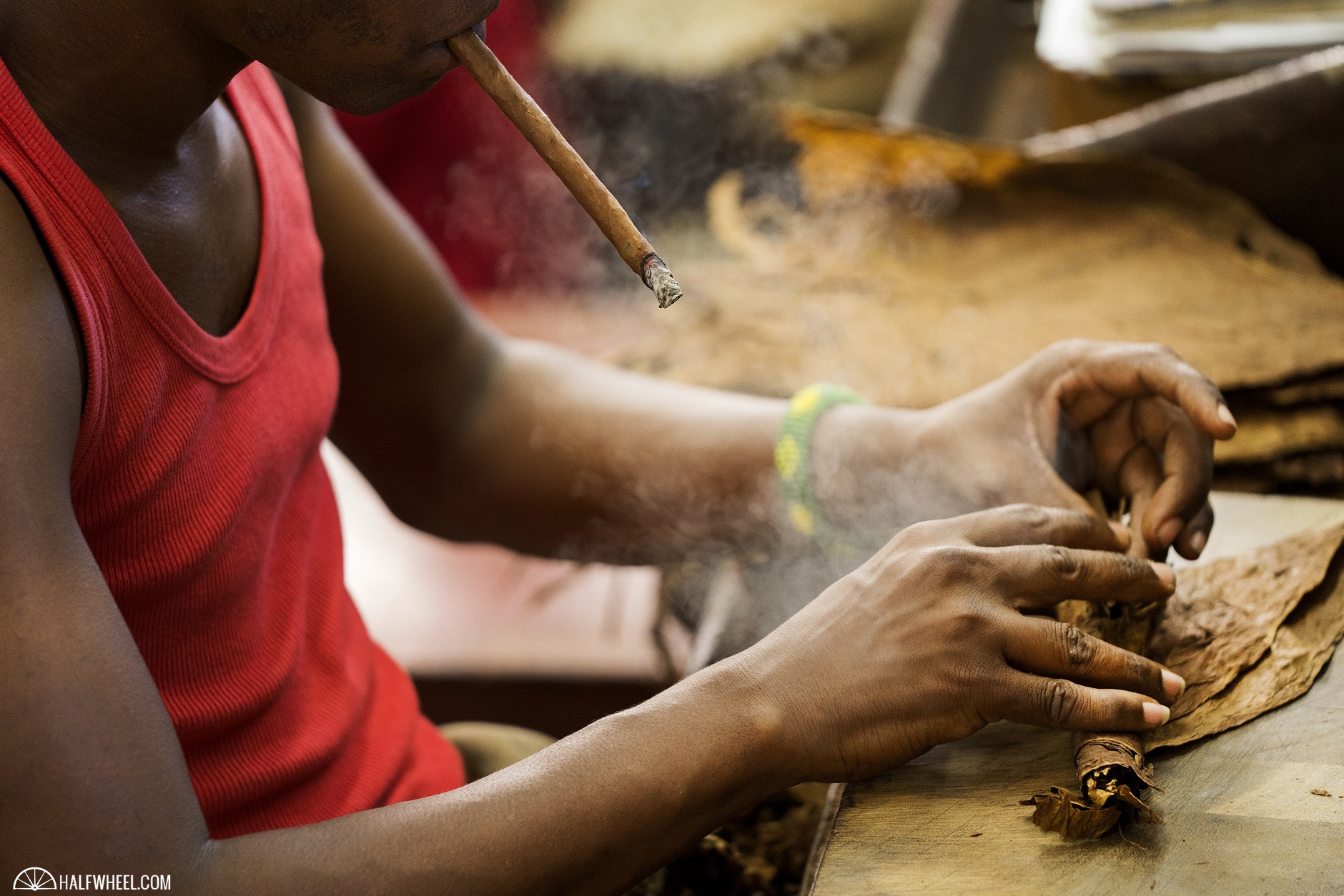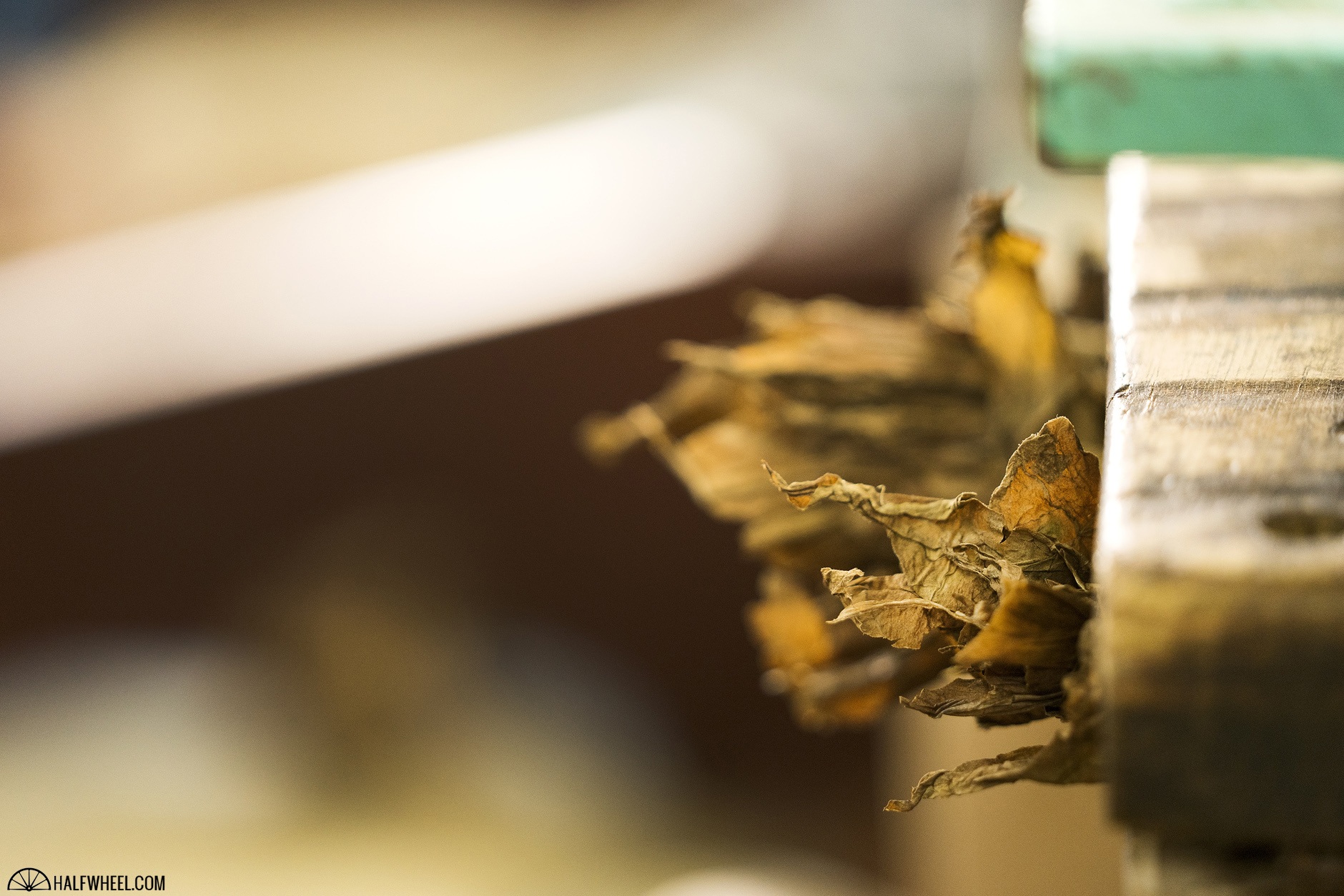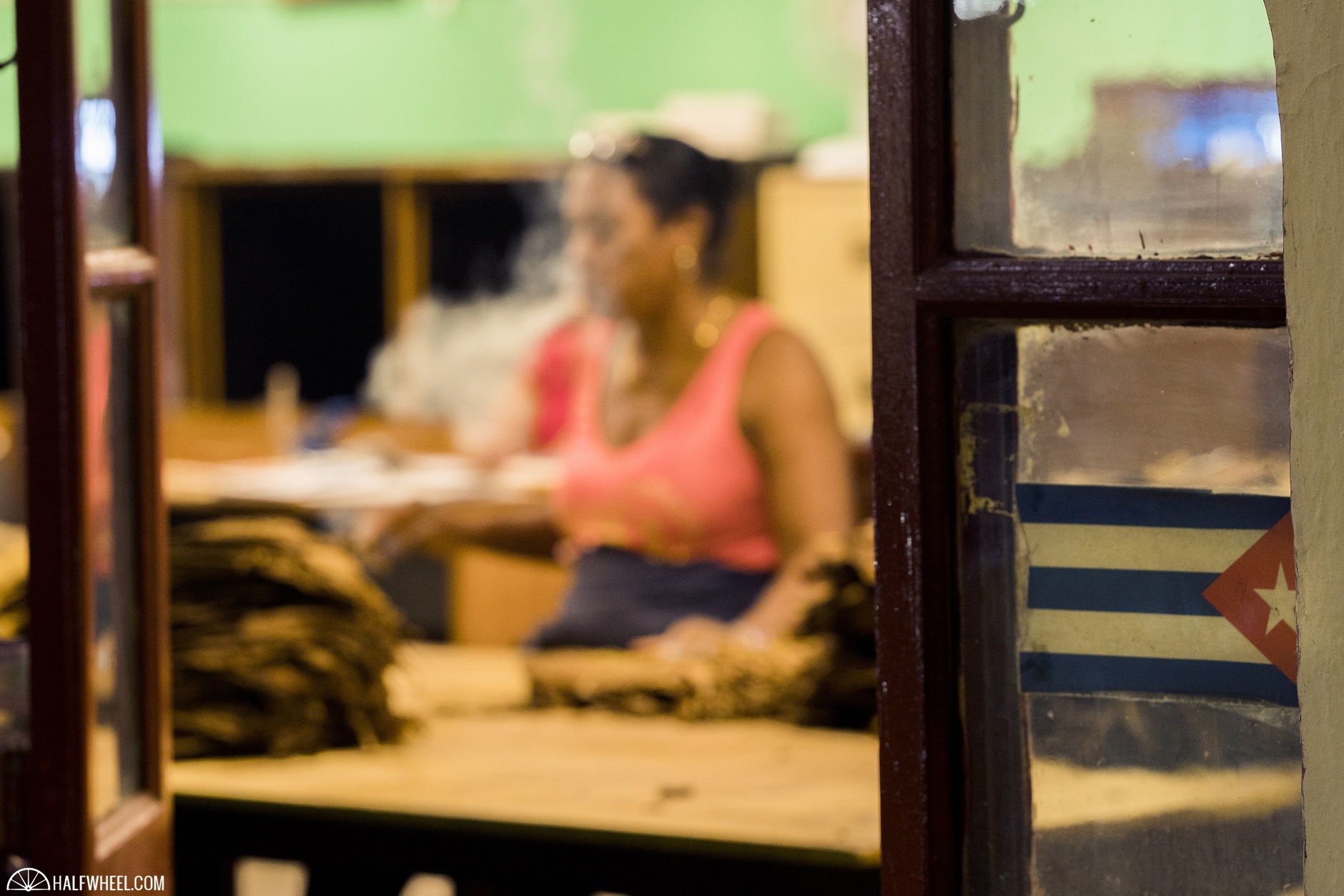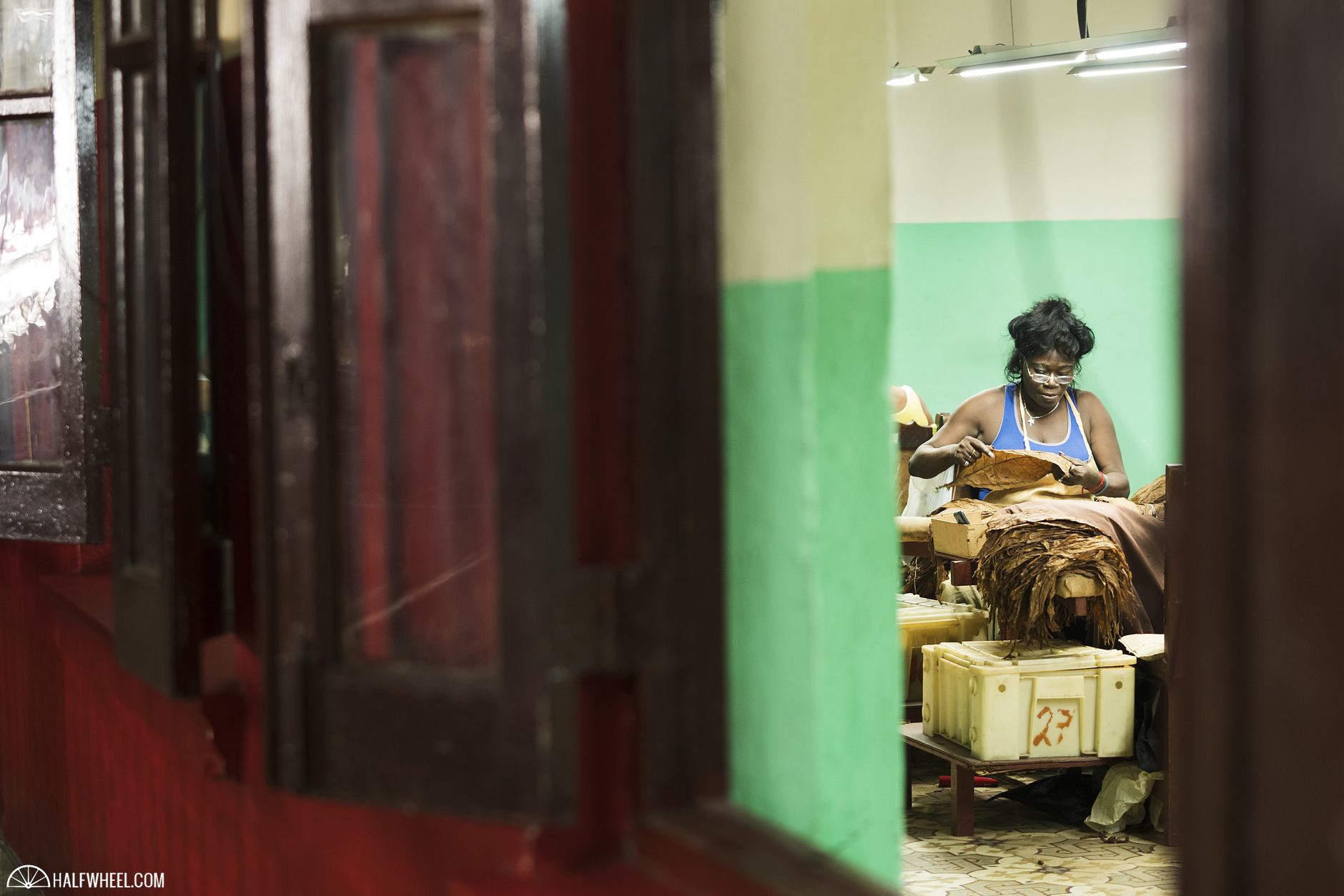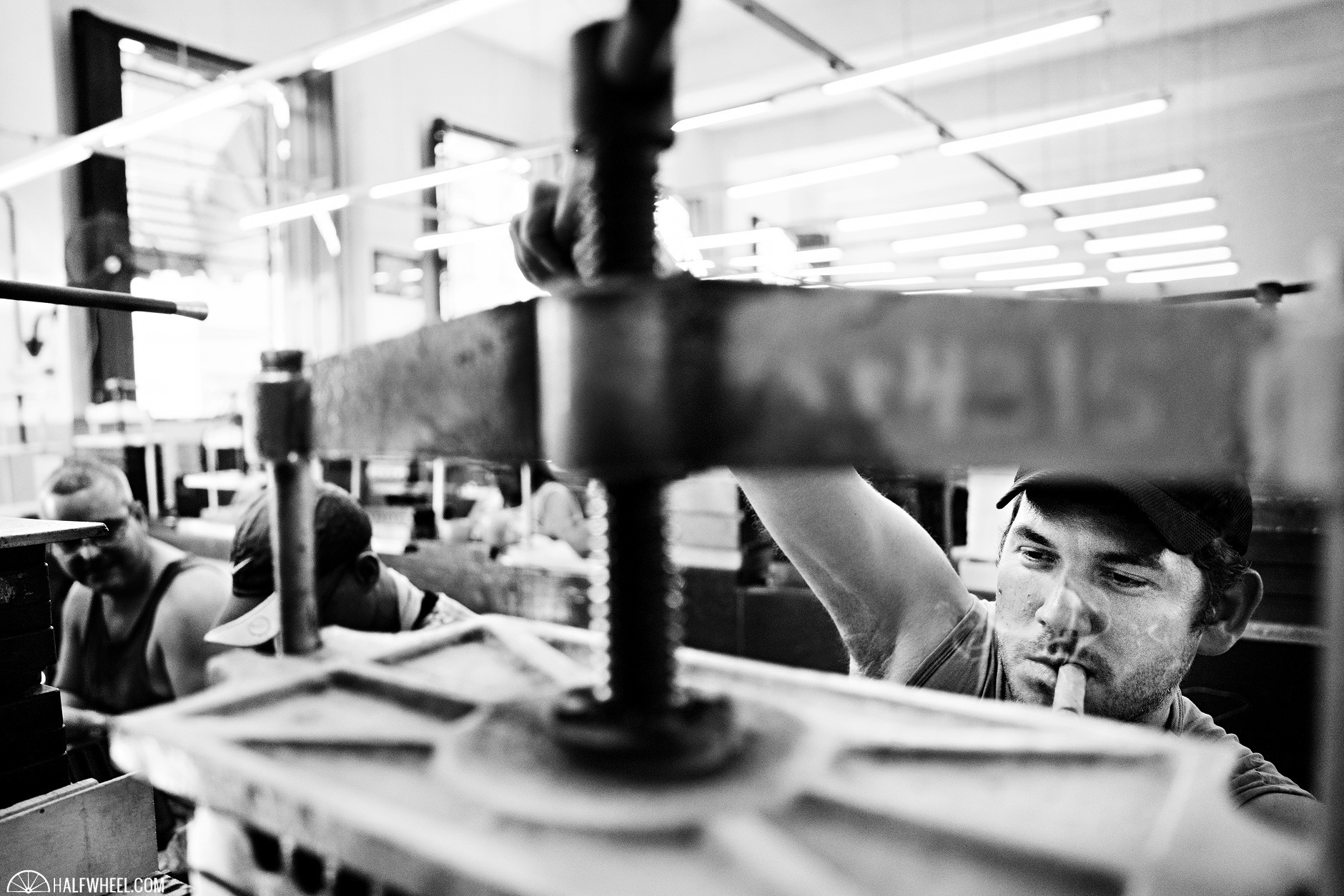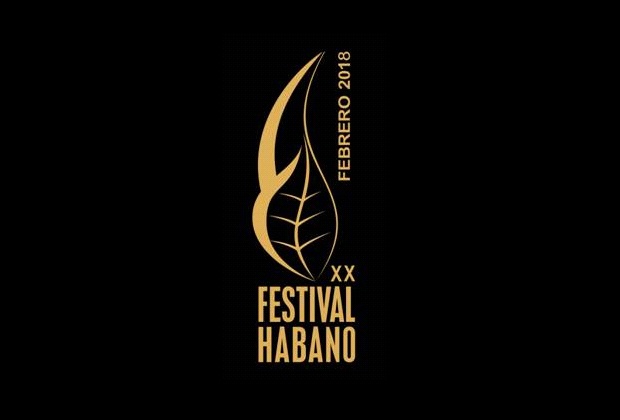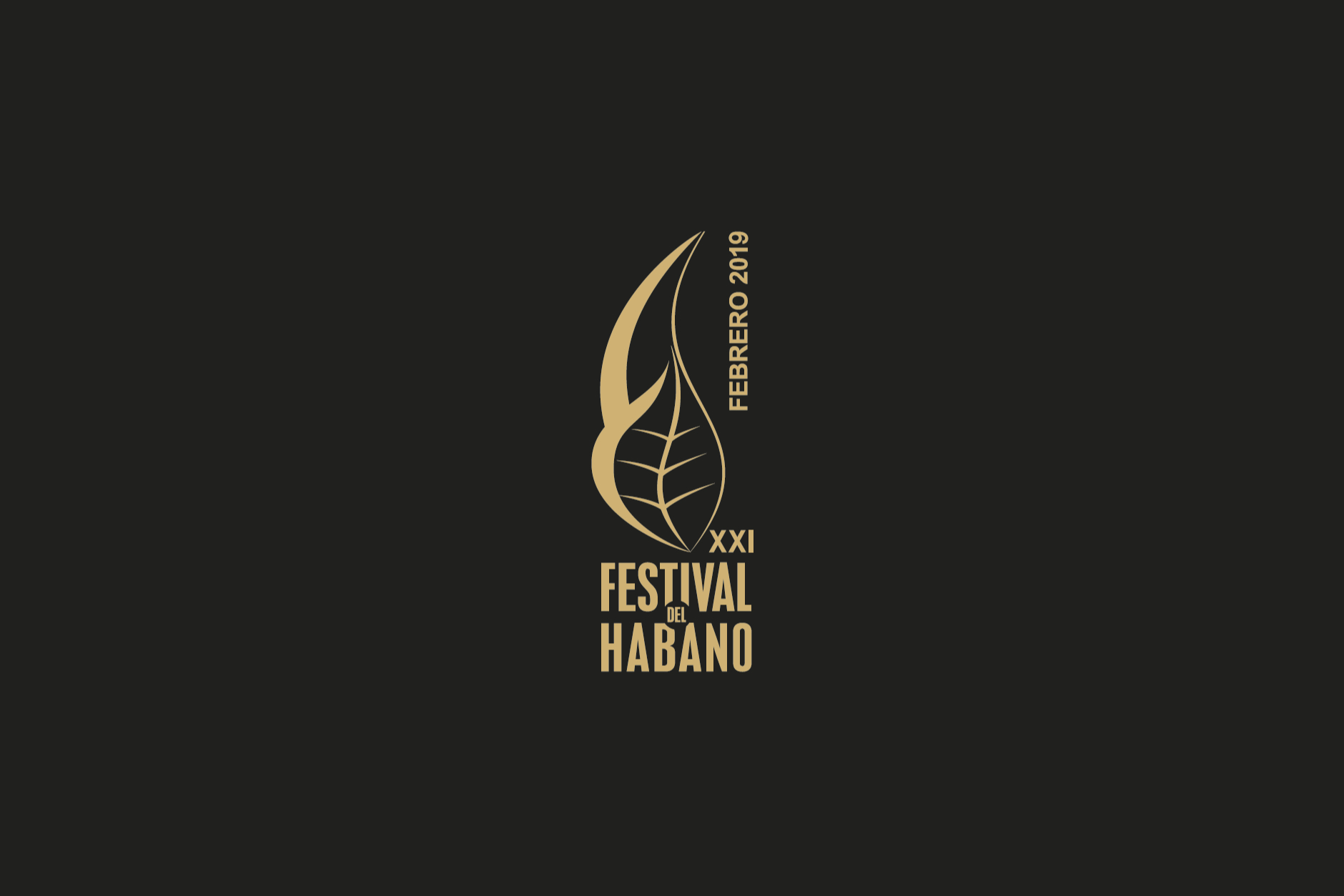Unlike the three days before this, I was woken up not by my phone alarm, but by some dogs howling close by.
After taking a shower and having a quick breakfast, we were on our way to the H. Upmann factory, located in central Havana. I absolutely love photographing cigar factories—especially ones with some history behind them—and the H. Upmann factory fits the bill nicely.
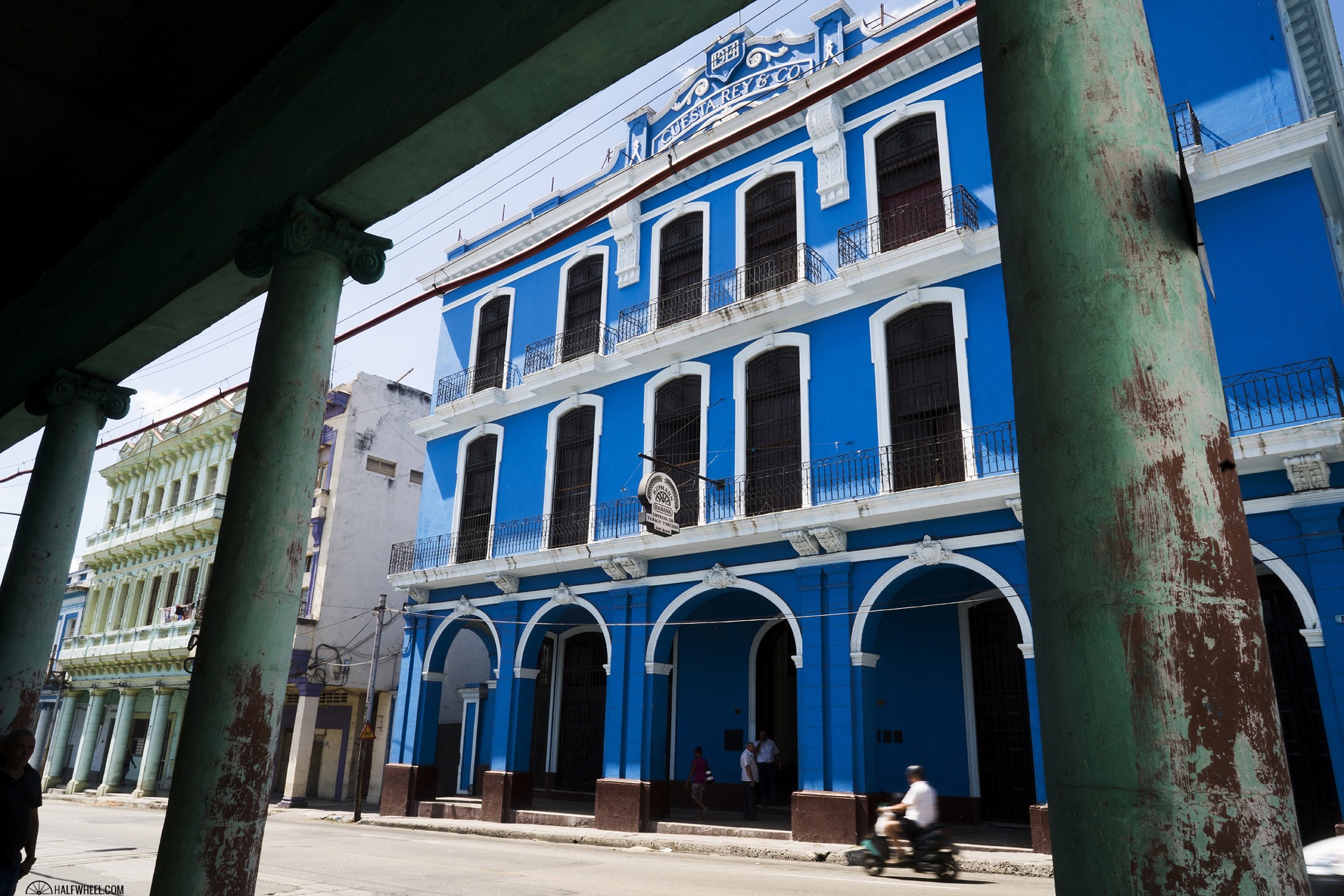
The original H. Upmann factory closed down in the early 2000s and production was moved to a brand new, more modern factory. Unfortunately, the combination of Cuba’s climate and air from the ocean wreaked havoc on the building, forcing it to be closed after only 10 years. In 2011, the production of H. Upmann cigars was “temporarily” moved to the Romeo y Julieta factory, where it remains to this day.
The building is as striking as it is unique the first time you see it, with its rich blue exterior and marble staircase in the front room. We were told there are more than 200 rollers working there, although probably only about 75 were there on the day we visited. Interestingly, I noticed a number of blue plastic molds being used, as well as the fact that the vast majority of rollers were men, a very different situation than in Nicaragua, where women often are the ones tasked with applying wrapper.
Speaking of the rolling gallery, all of the rollers are located on one massive floor—the second floor as you walk up the aforementioned marble staircase—and there a small number of women stripping stems from tobacco leaves in a small room in the back. Large, ornate open windows line the building on all sides letting in an abundance of natural light and there were multiple times that I saw workers hanging out talking while standing close to them.
Walking through the gallery is an interesting experience, as the rollers are surprisingly fascinated by the people who were taking photographs and asking them to pose. While I was shooting the El Laguito factory last year—where Cohiba cigars are rolled—I was asked about every three minutes if I wanted to buy some loose cigars, but here there was none of that going on. This may have been due to the large number of guards around.

Speaking of the guards, I spent about an hour shooting various photographs and walking around the rolling tables before moving to the staircase to go up another level, where I was stopped cold by an outstretched hand. Surprisingly, we were only allowed to see the rolling floor, with packaging, banding, sorting and all of the other aspects of the cigar making process was being kept under wraps.
After being directed down some back stairs, I ran into what looked to be an elevator formerly used in a mine shaft around the turn of the century. In fact, it was so old I was a bit surprised to see it still worked, bringing people down from the upper levels while I was standing there hoping it would not fall down on top of me.

When our time at the factory was over, we took a back to the convention center, where the first seminar was just starting. Titled “The Habano Religiosity,” the talk was headed by Cuban writer Natacha del Rio while traditional music was supplied by the bands Deysi Brau and Oba Are Anle band at regular intervals. The seminar discussed how the first inhabitants of Cuba used cigars various aspects of cigars—including smelling, touching and puffing—as key elements of both their religion and magic rites.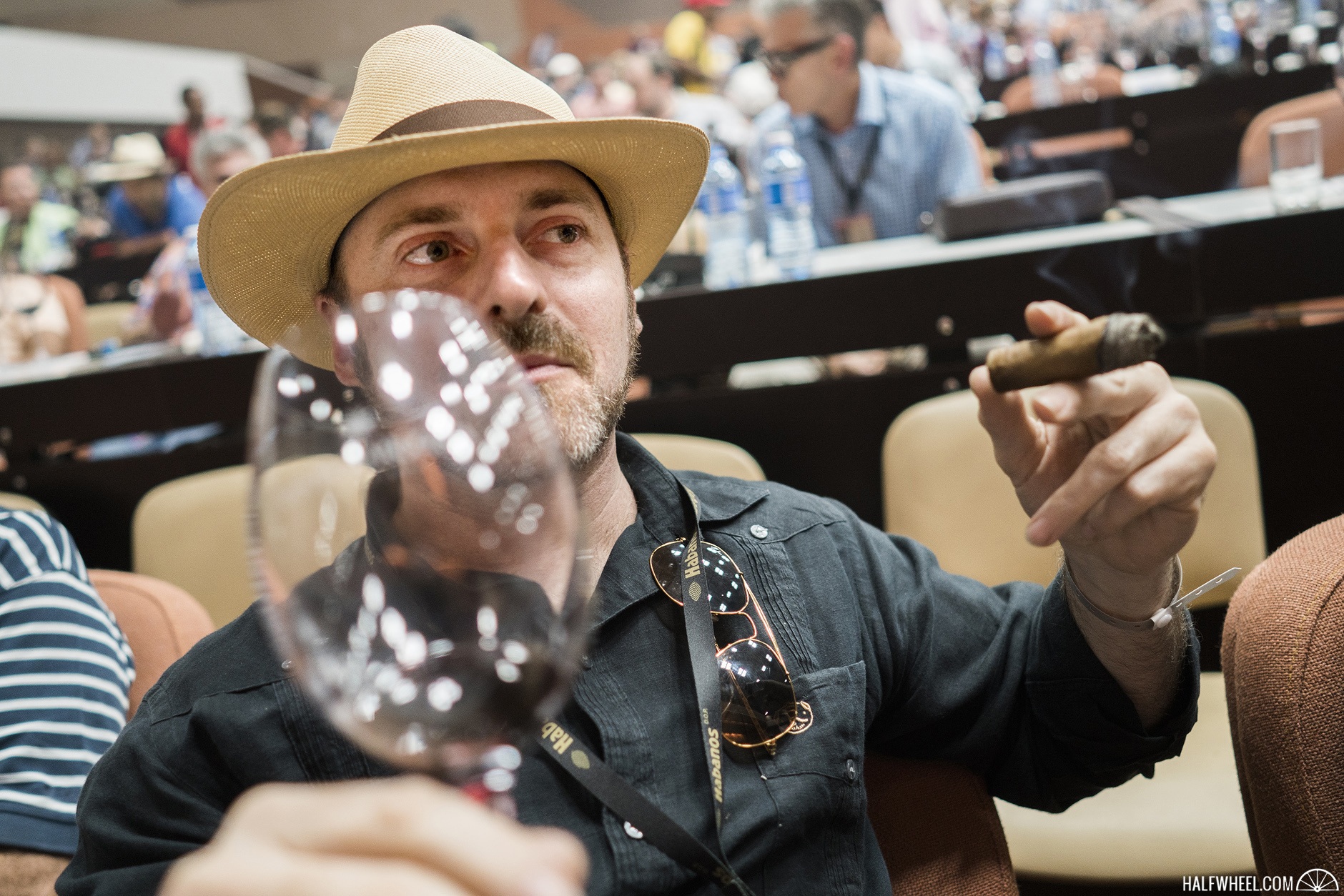
That seminar led right into another one, this time featuring a pairing of cigars and wine. After waiting close to an hour after the appointed time, the large crowd was let into the large room for the tasting, only to find that about one third were given no cigars or wine, although the wine was eventually poured into everyone’s glass who was missing it. Unfortunately, there were a number of people—including yours truly—who were still sans their cigar, although in my case it did not matter as much, since I was photographing the event.
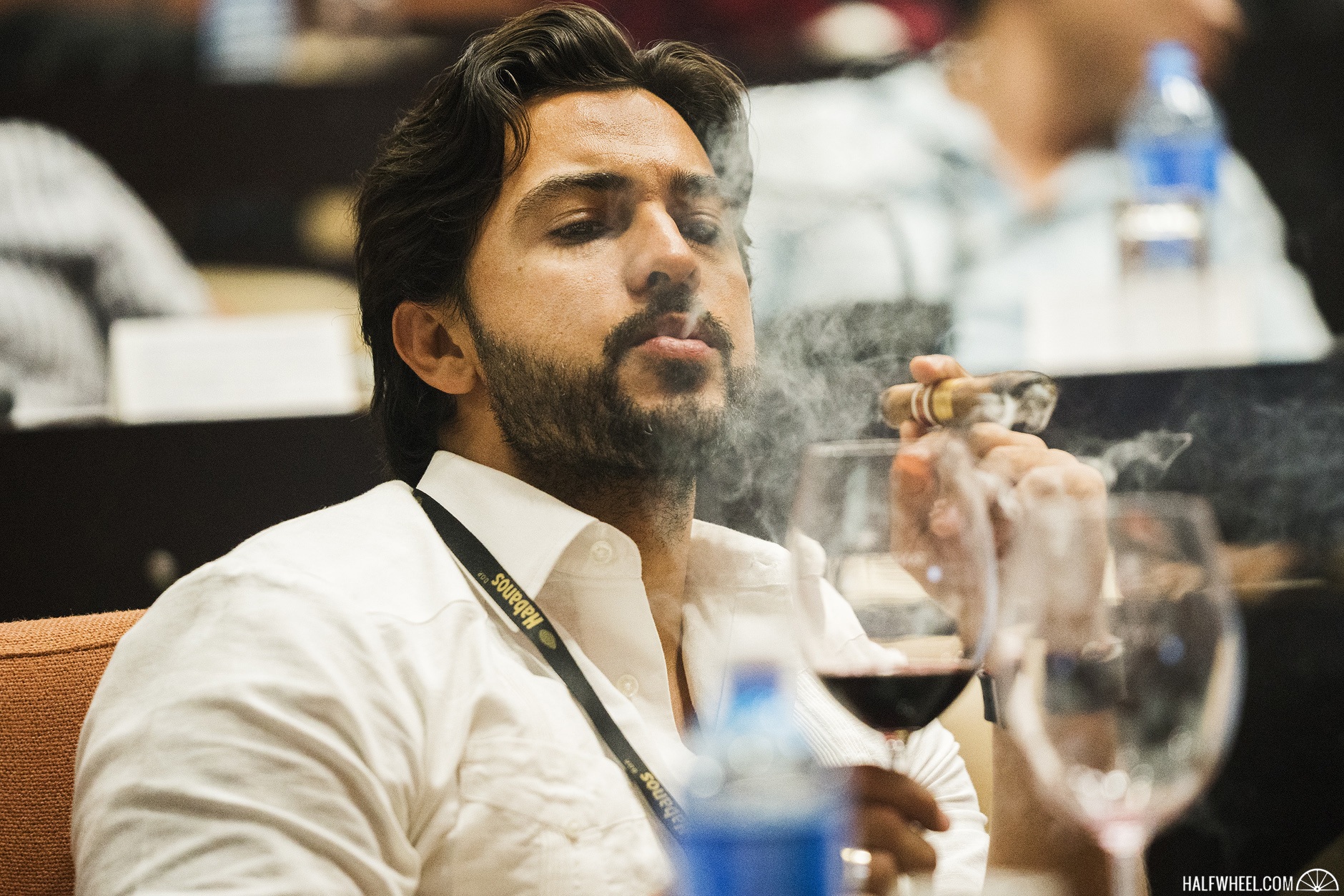
This particular event paired two wines from Vina Santa Carolina’s Reservas de Familia line—a cabernet sauvignon and a carmenere—were supplied to be enjoyed with a Romeo y Julieta Wide Churchill, which you may remember was also one of the cigars that were used in the cigar and brandy pairing yesterday. The seminar was led by Nestor Varela, director of a Casa del Habano franchise, as well as Victor Aguilera, a specialist from a La Casa del Habano.
In addition, the attendees of the pairing were guided by Juan Jesus Machin, the Habanosommelier Word Champion as we as the winner of the Habanosommelier Master of Masters Contest that was held during last year’s festival.
That pairing happened to be the final event on the docket for the day, which meant I could finally take a cab back to the villa to download cards, eat some dinner, get some work done and rest up a bit in preparation for the next day, which will include not only the finals of the Habanosommelier competition but also the monster Gala Evening event that will encompass about six hours during my final night in Cuba.

